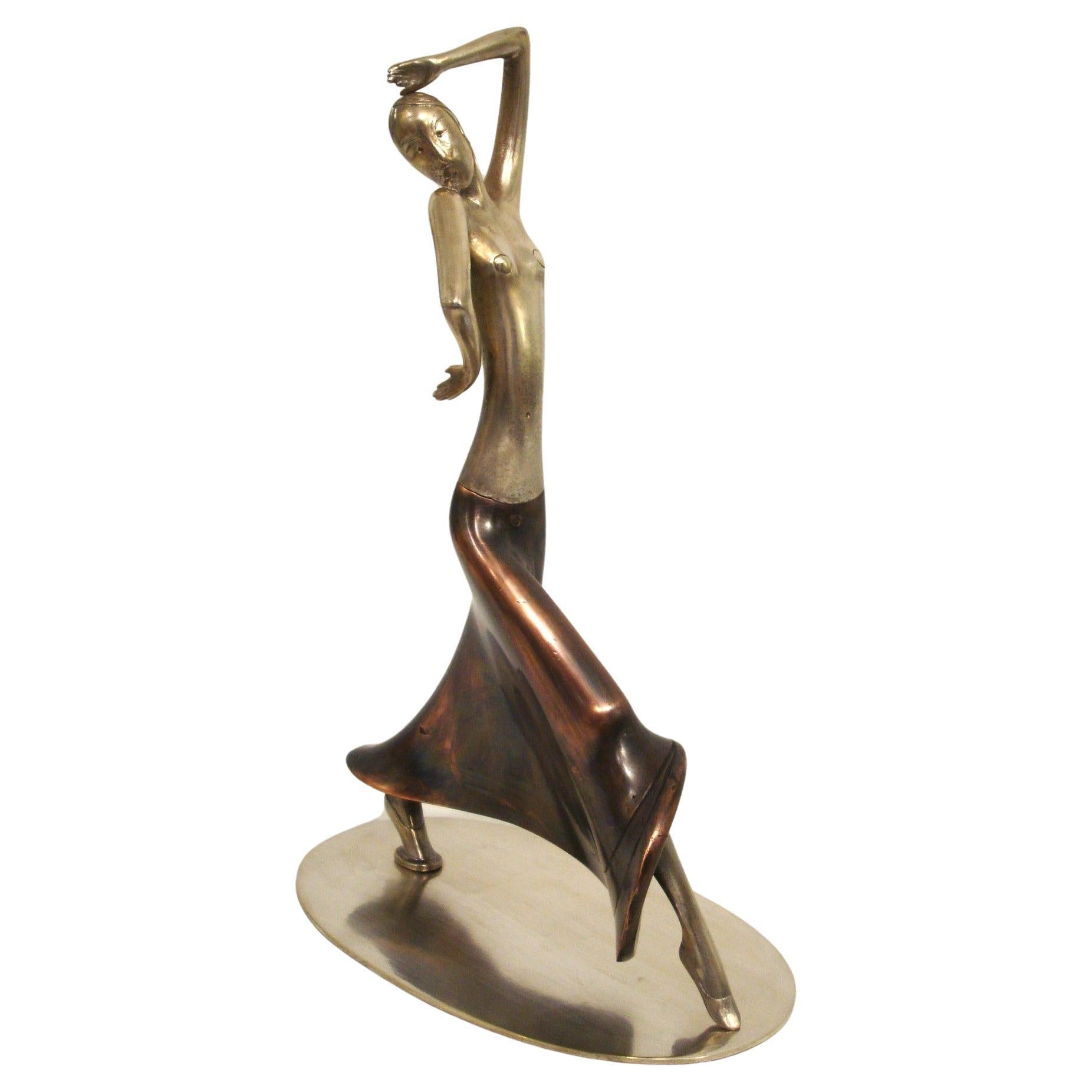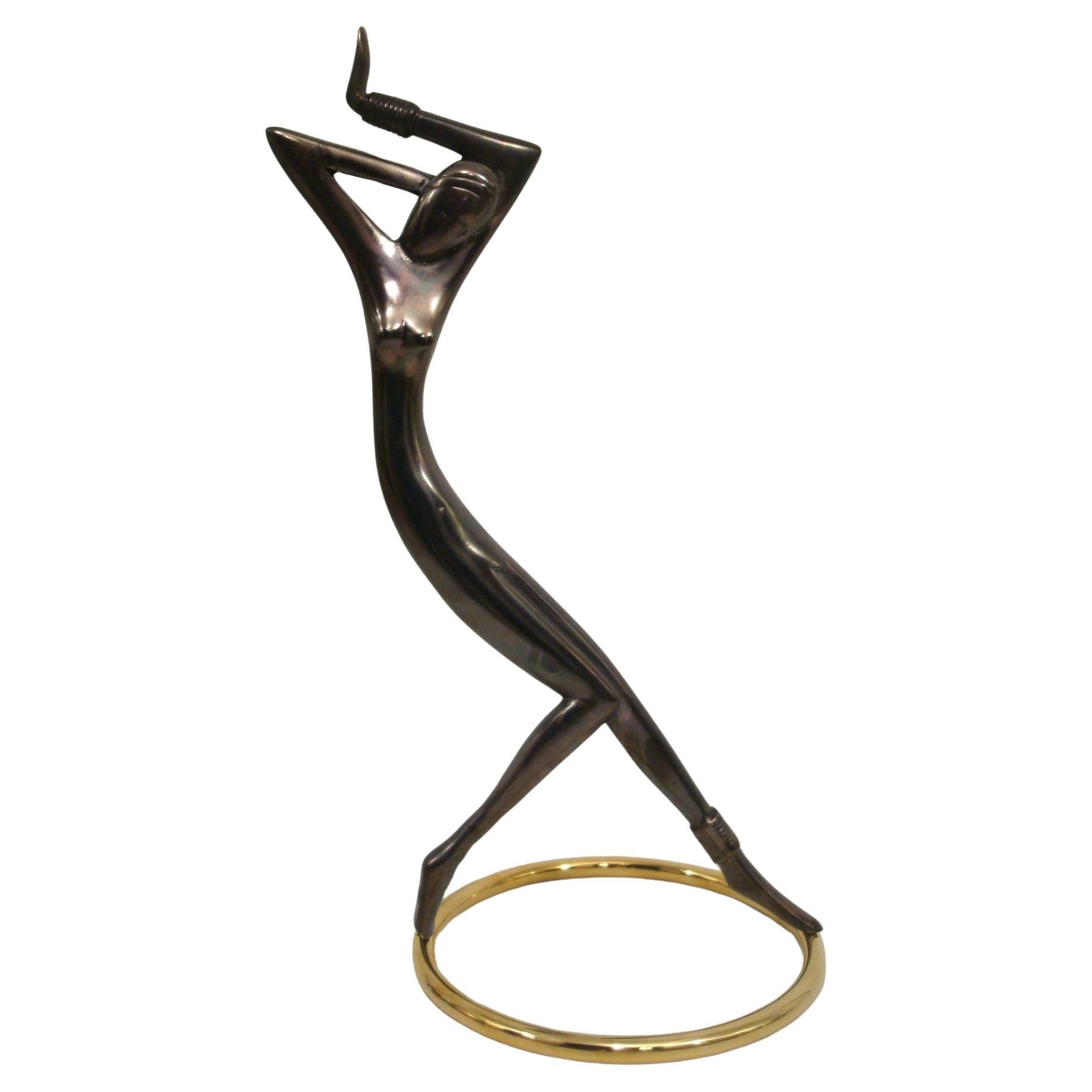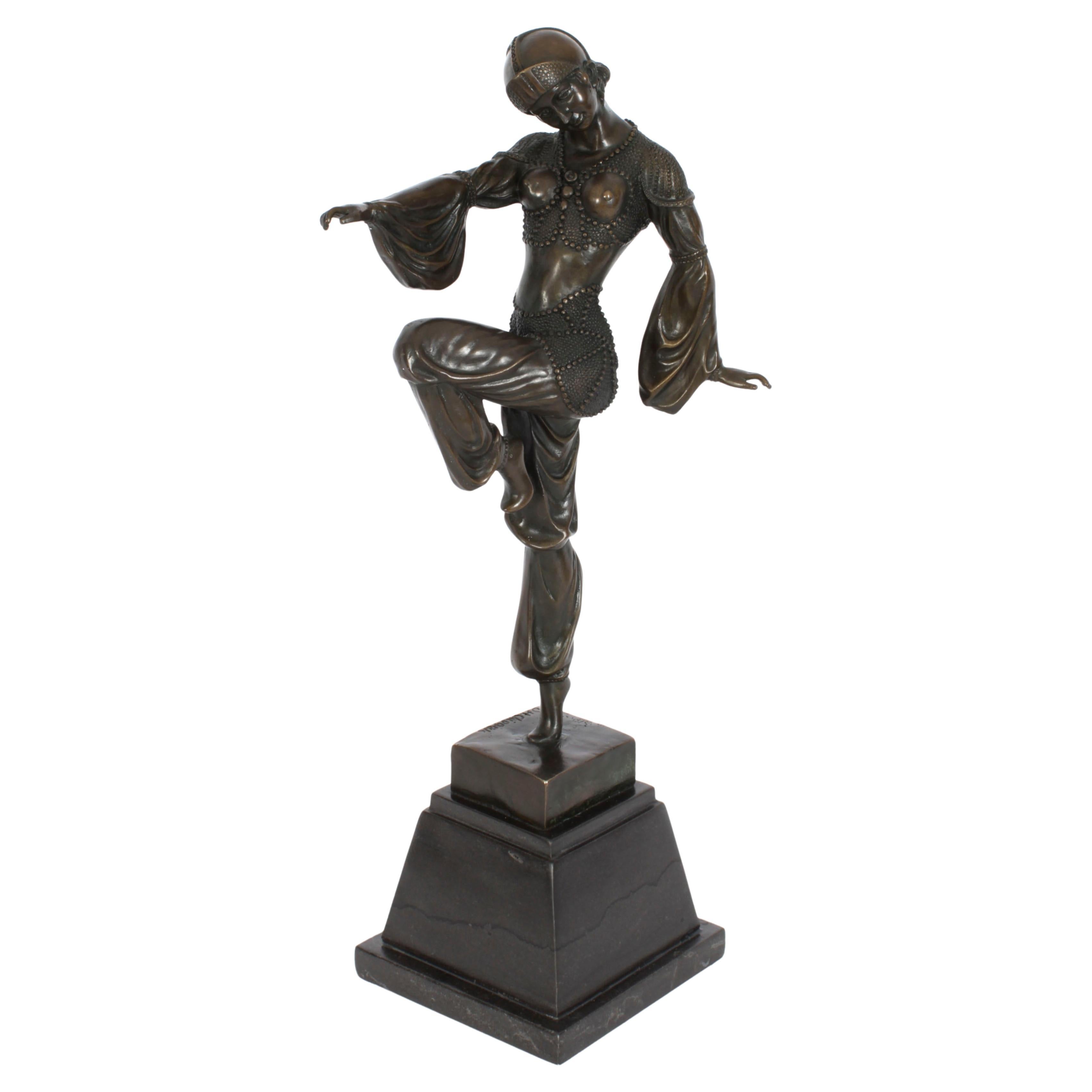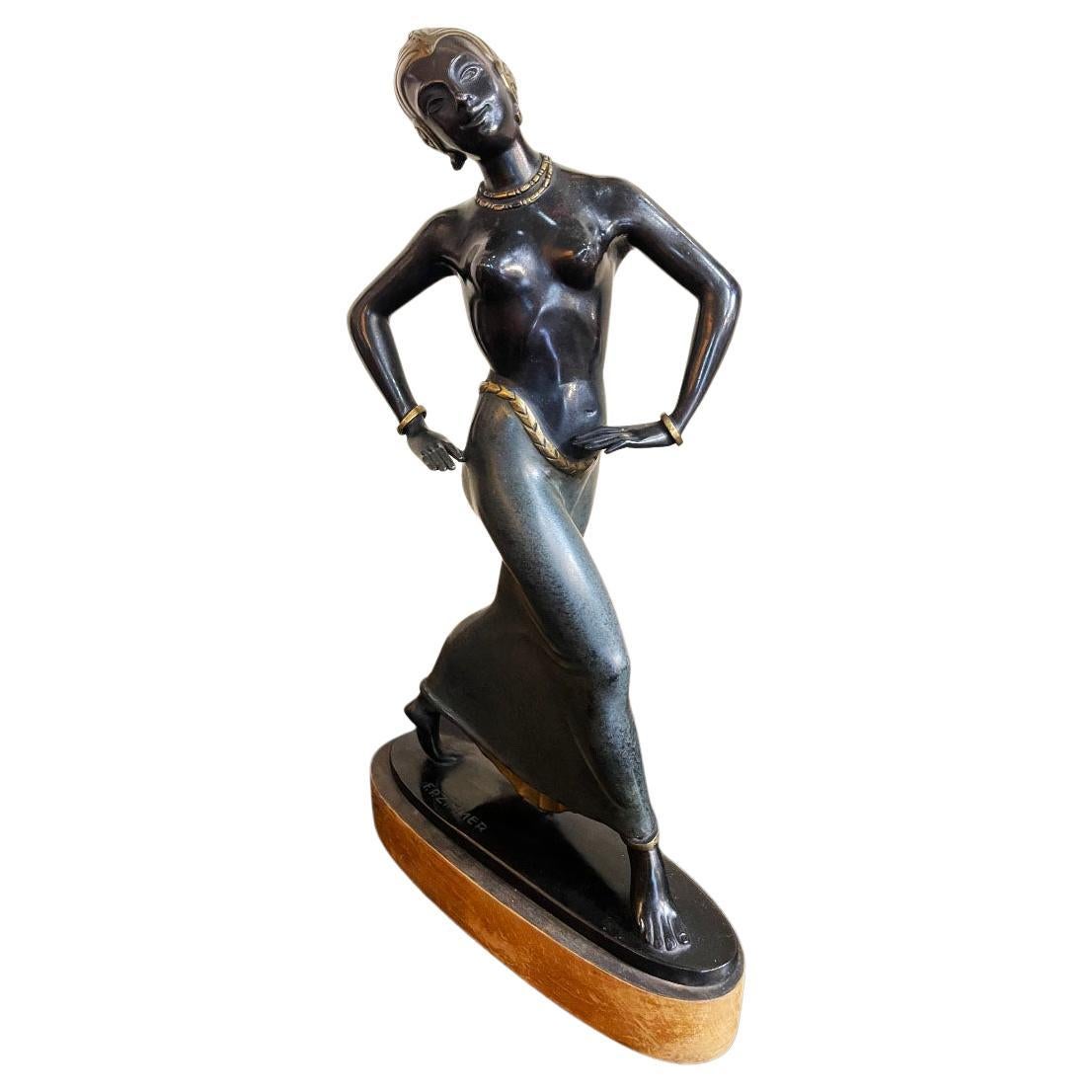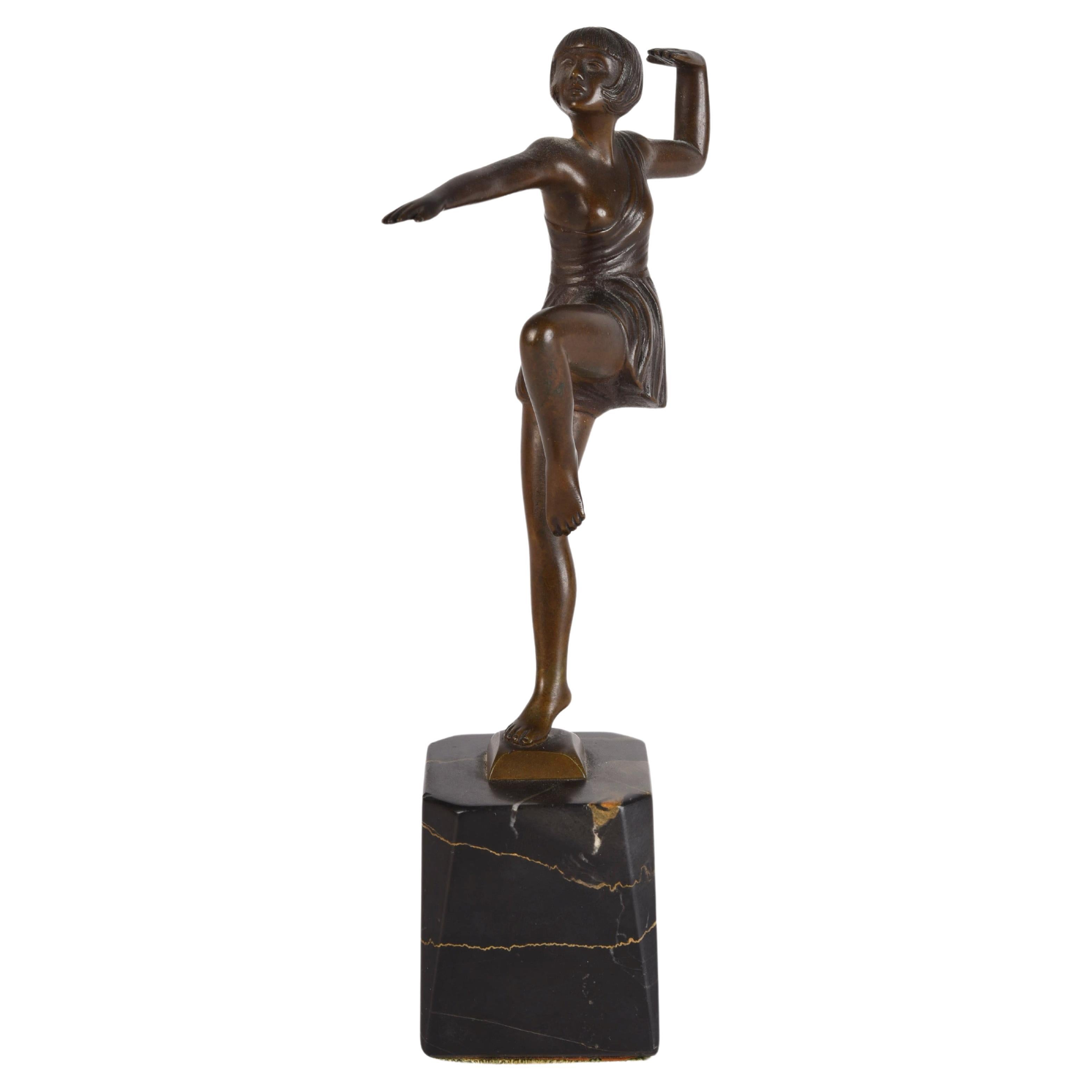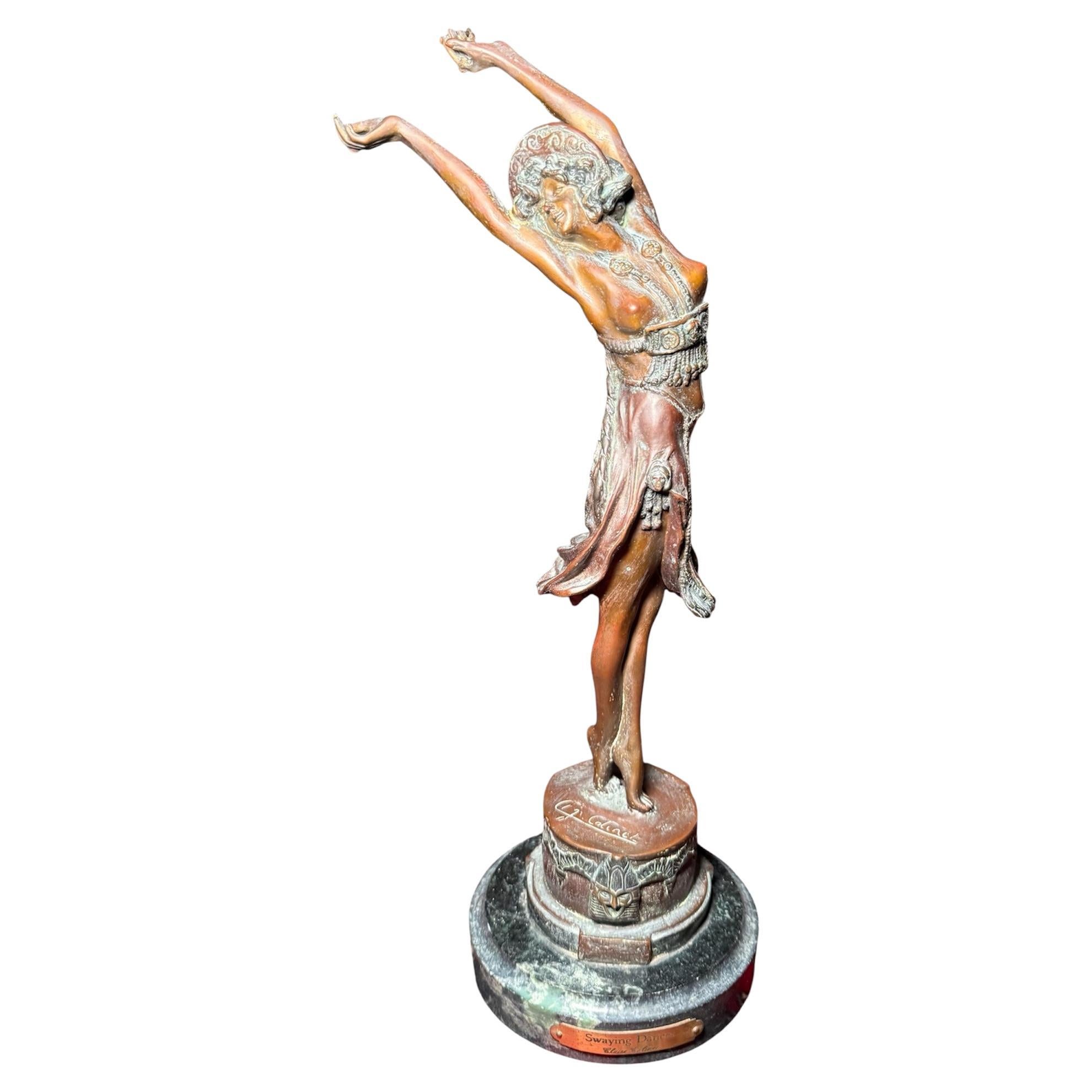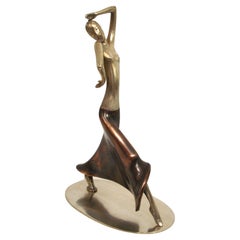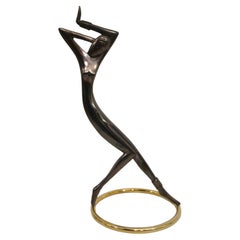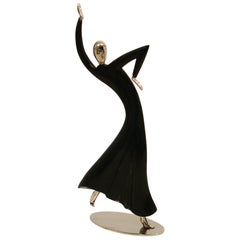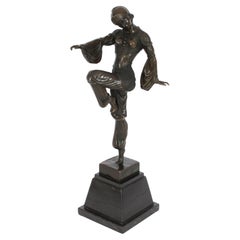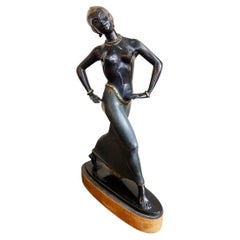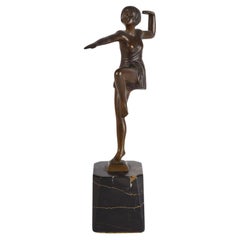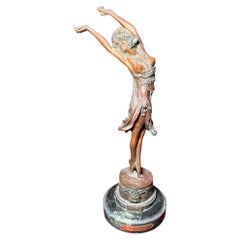Items Similar to Art Deco Female Dancer Sculpture - Josephine Baker - 1920´s
Want more images or videos?
Request additional images or videos from the seller
1 of 8
Art Deco Female Dancer Sculpture - Josephine Baker - 1920´s
$1,039
$1,60035% Off
£781.76
£1,203.8635% Off
€905.51
€1,394.4335% Off
CA$1,462.85
CA$2,252.7135% Off
A$1,625.39
A$2,50335% Off
CHF 854.40
CHF 1,315.7335% Off
MX$19,839.63
MX$30,551.8935% Off
NOK 10,802.69
NOK 16,635.5135% Off
SEK 10,127.76
SEK 15,596.1735% Off
DKK 6,758.06
DKK 10,407.0235% Off
About the Item
Art Deco Female Dancer Sculpture - Josephine Baker - 1920´s.
Polychromed Bronze mounted over a black and gold italian portoro base.
Josephine Baker (born Freda Josephine McDonald, naturalised French Joséphine Baker; 3 June 1906 – 12 April 1975) was an American-born French entertainer, French Resistance agent, and civil rights activist. Her career was centered primarily in Europe, mostly in her adopted France. Baker was the first African-American to star in a major motion picture, the 1927 silent film Siren of the Tropics, directed by Mario Nalpas and Henri Étiévant.
During her early career Baker was renowned as a dancer, and was among the most celebrated performers to headline the revues of the Folies Bergère in Paris. Her performance in the revue Un vent de folie in 1927 caused a sensation in Paris. Her costume, consisting of only a short skirt of artificial bananas and a beaded necklace, became an iconic image and a symbol of the Jazz Age and the 1920s.
Baker was celebrated by artists and intellectuals of the era, who variously dubbed her the “Black Venus”, the "Black Pearl", the "Bronze Venus", and the "Creole Goddess". Born in St. Louis, Missouri, she renounced her U.S. citizenship and became a French national after her marriage to French industrialist Jean Lion in 1937. She raised her children in France. "I have two loves, my country and Paris", Baker once said, and she sang: «J'ai deux amours, mon pays et Paris».
She was known for aiding the French Resistance during World War II. After the war, she was awarded the Croix de guerre by the French military, and was named a Chevalier of the Légion d'honneur by General Charles de Gaulle.
Baker refused to perform for segregated audiences in the United States and is noted for her contributions to the Civil Rights Movement. In 1968 she was offered unofficial leadership in the movement in the United States by Coretta Scott King, following Martin Luther King Jr.'s assassination. After thinking it over, Baker declined the offer out of concern for the welfare of her children.
We have specialized in the sale of Art Deco and Art Nouveau and Vintage styles since 1995. If you have any questions we are at your disposal. Pushing the button that reads 'View All From Seller'. And you can see more objects to the style for sale. Why are there so many antiques in Argentina?
In the 1880 – 1940 there was a grate wave of immigration encouraged by the periods of war that were taking place. 1st World War took place between 1914 and 1918 2nd World War took place between 1939 and 1945 The immigrants options were New York or Buenos Aires. Tickets were cheap and in Buenos Aires they were welcomed with open arms, as it was a country where everything was still to be done. Argentina was the country of new opportunities, labour was needed and religious freedom was assured, in many cases the of the family travel first until they were settled and then the rest of the family members join them. In the immigrant museum “Ellis Island Immigrant Building” in New York you can se the promotional posters of the boats that would take them to a new life. Between the years 1895 and 1896, Argentina had the highest DGP (gross domestic product) per capita in the world according to the Maddison Historical Statistics index, this situation arose due to the large amount of food being exported to European countries, which were at war. The Argentinean ships left the port of Buenos Aires with food, but they returned with furniture, clothes and construction elements, (it´s common to see this the old buildings of the historic neighbourhood of San Telmo, the beams with the inscription “Made in England)”, as well as many markets that were built in Buenos Aires, such us the San Telmo Market, whose structure was brought by ship and afterwards assembled in 900 Defensa Street. With the great influence of European immigrants living in the country, the children of the upper classes travelled to study in France, resulting in the inauguration of “La Maison Argentinienne”, on 27th of June 1928, in the international city of Paris, which hosted many Argentinians that were studying in Frace. It´s the fourth house to be built after France, Canada and Belgium, being the first Spanish-speaking one. Still in place today (17 Bd Jourdan, 75014, Paris, France). Many of the children of these wealthy families who attended international art exhibitions, museums and art courses abroad, took a keen interest in the European style. This is why Buenos Aires was at the time referred as “The Paris of South America”. Between the years 1890 and 1920 more than a hundred Palaces were built on Alvear Avenue the most exclusive avenue in Buenos Aires. Today some of these palaces have been transformed into museums, hotels and embassies. In the year 1936, the Kavanagh building was inaugurated, it was the tallest reinforced concrete building in South America. During 1994 the American Society of Civil Engineers distinguished it as an “international engineering milestone”, and it´s now considered a World Heritage of Modern Architecture. At the time was common to hire foreign architects such as Le Corbusier, who visited Buenos Aires/Argentina in 1929 and in 1948 he drew up the blueprints for a house built in La Plata City (which was declared a World Heritage Site). In 1947, the Hungarian architect Marcelo Breuer designed “Parador Ariston” in the seaside city of Mar del Plata. After an Argentinean student at Harvard University convinced him to come to Argentina. He worked on an urban development project in the Casa Amarilla, area of La Boca. The Ukrainian architect, Vladimiro Acosta, arrives in Argentina in 1928 and worked as an architect until que moved to Brazil. Antonio Bonet, a Spanish architect who worked with Le Corbusier in Paris, arrives in Argentina in 1937, where he carried out several architectural works and in 1938 designs the well-known BFK chair. Andres Kálnay, of Hungarian origin, made around 120 architectural masterpieces, among which the former Munich brewery stands out, he even made the furniture’s design. The German architect, Walter Gropius, director of the Bauhaus, lived in Argentina, where he wrote articles for “Sur” magazine and founded in Buenos Aires, an architectural firm with Franz Möller, who was also an architect, where he built two houses. At the same time several famous designers decided to immigrate to Argentina, among them we can find the well-known French designer, Jean-Michel Frank, who arrived in the country in 1940 and also worked for the Rockefeller family. Special pieces were made, which were sold exclusively in the country, such as the well-known German company “WMF”, who sold their products by catalogue, which were chosen by the ladies of high society in the list of wedding gifts, as well as the pieces designed by Christofle. The Swiss sculptor Alberto Giacometti, made special pieces for Argentinean mansions. In 1904 the first Jansen branch outside Paris was established in Buenos Aires, as the Argentinean clientele demanded a large amount of furniture, from the end of the 19th century to the mid-20th century. In 1970, the brand Rigolleau Argentina made pieces authorised by Lalique. The brands Maple and Thompson also set up shop in the country. The French plastic artist, Marcel Duchamp moved to Argentina in 1918-1919. Glass signed Gallé, Charder, Leverre, Schneider, Muller and other French firms. They were bought in flower shops and were given to ladies with beautiful floral arrangements. Some furniture manufacturers travelled to international fairs and bough the patterns to produce the furniture in Argentina, such as the furniture firm Englander and Bonta, who bought the patterns in Italy. It is worth mentioning that in Argentina we have the largest community of Italians outside of Italy, as it is estimated that 70 percent of the inhabitants have at least one Italian descendant, followed by Spanish immigrants. The most Important furniture stores in Argentina: Comte is founded in 1934 (under the direct management of Jean Michel Frank in 1940). Nordiska (Swedish company established in 1934). Churba in 1960, a company that brought foreign designers to present their furniture in the country: Denmark: (Arne Jacobsen, Finn Juhl, Bender Madsen, Ejner Larsen, Poul Kjaerholm, Hans Wegner) Sweden: (Hans Agne Jakobsson, Gustavsberg) United States: (Herman Miller) Finland: (Lisa Johansson, Folke Arstrom, Tapio Wirkkala, Alvar Aalto, Timo Sarpaneva) Swedish Factory: (Orrefors) Italy: (Littala, Vico Magistretti, Emma Gismondi, Gae Aulenti, Angelo Mangiarotti, Elio Martinelli, Gianna Celada, Angelo Mangiarotti, Mario Bellini, Carlo Scarpa) Finland: (Olivia Toikka) Plata Lappas (Lappas Silver): a goldsmith shop founded in 1887 in Argentina by Alcibiades Lappas of Greek origin. In 2019, in Argentina took place “the Art Deco world congress” . Argentina currently has more than 100 Art Deco buildings and another 90 Art Nouveau buildings throughout the city of Buenos Aires. Argentina is a country that has not been involved in many wars, which is why it has been a refuge for works of art and antiques from different periods of time, unlike European countries. That is way many collectors, museums and antique dealers from all over the world visit it, you should not miss the opportunity to visit this great country.
- Dimensions:Height: 9.85 in (25 cm)Width: 5.71 in (14.5 cm)Depth: 3.75 in (9.5 cm)
- Style:Art Deco (Of the Period)
- Materials and Techniques:Bronze,Polychromed
- Place of Origin:
- Period:
- Date of Manufacture:1920´s
- Condition:Wear consistent with age and use.
- Seller Location:Buenos Aires, AR
- Reference Number:1stDibs: LU2027341772912
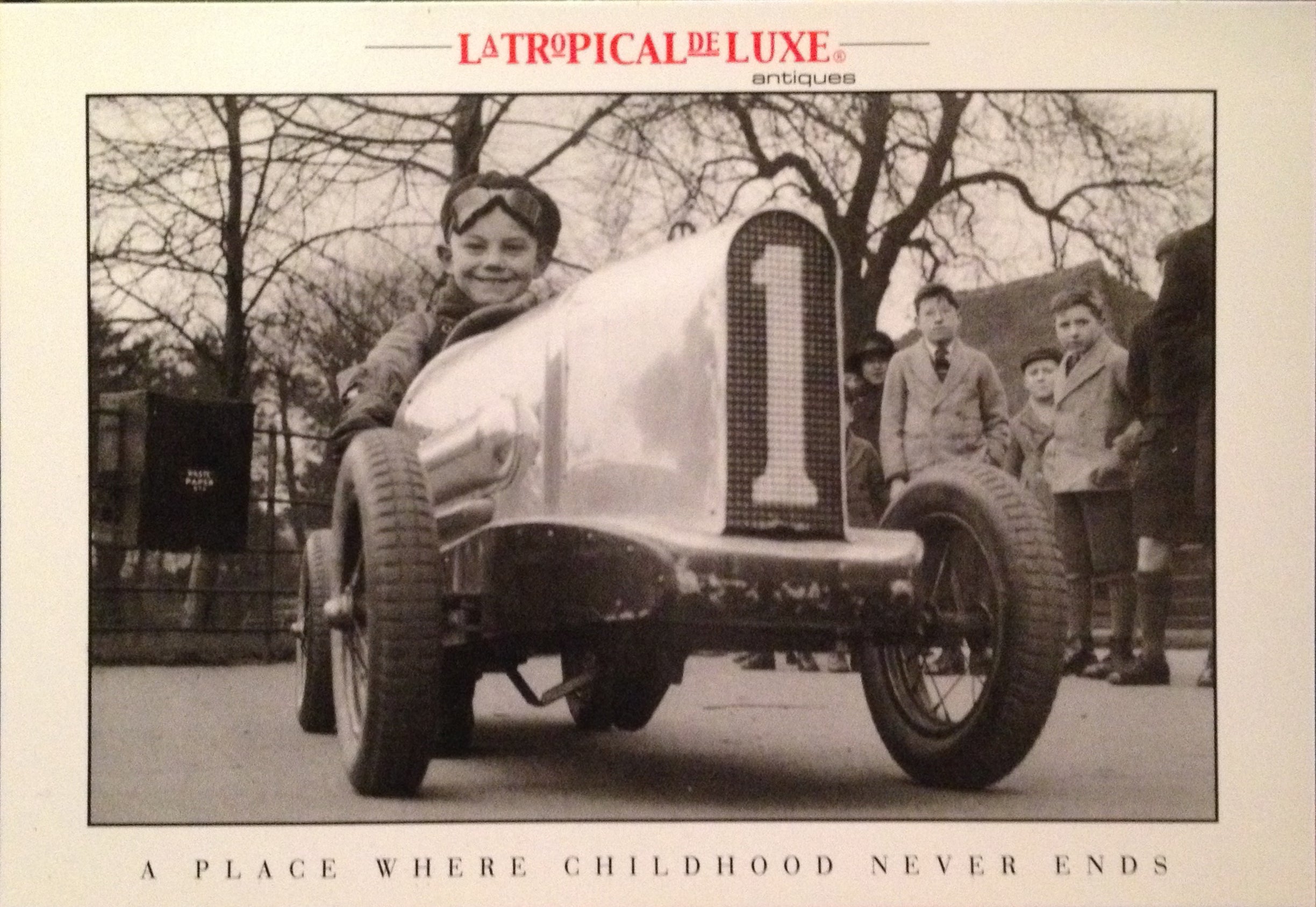
About the Seller
4.9
Vetted Professional Seller
Every seller passes strict standards for authenticity and reliability
Established in 2002
1stDibs seller since 2016
322 sales on 1stDibs
Typical response time: 1 hour
- ShippingRetrieving quote...Shipping from: Buenos Aires, Argentina
- Return Policy
Authenticity Guarantee
In the unlikely event there’s an issue with an item’s authenticity, contact us within 1 year for a full refund. DetailsMoney-Back Guarantee
If your item is not as described, is damaged in transit, or does not arrive, contact us within 7 days for a full refund. Details24-Hour Cancellation
You have a 24-hour grace period in which to reconsider your purchase, with no questions asked.Vetted Professional Sellers
Our world-class sellers must adhere to strict standards for service and quality, maintaining the integrity of our listings.Price-Match Guarantee
If you find that a seller listed the same item for a lower price elsewhere, we’ll match it.Trusted Global Delivery
Our best-in-class carrier network provides specialized shipping options worldwide, including custom delivery.More From This Seller
View AllArt Deco Josephine Baker Female Dancer Brass Statue, Austria 1930 Karl Hagenauer
By Werkstätte Hagenauer Wien, Karl Hagenauer
Located in Buenos Aires, Olivos
Exceptional Karl Hagenauer statue of a female dancer sculpture, commonly titled as Josephine Baker, cast and nickel plated brass, circa 1930s. , manufactured by Werkstätte Hagenauer ...
Category
Mid-20th Century Austrian Art Deco Figurative Sculptures
Materials
Brass
Art Deco Josephine Baker Dancer Brass Sculpture / Figure Hagenauer 1930´s
By Werkstätte Hagenauer Wien
Located in Buenos Aires, Olivos
Art Deco Hagenauer Bronze Figure of Josephine Baker, 20th century Impressed mark to foot: WHW
Hagenauer workshops were opened in Vienna in 1898 by Carl, the father of both Karl and...
Category
Mid-20th Century Austrian Art Deco Figurative Sculptures
Materials
Brass
Hagenauer Bronze & Wood Sculpture Dancer Wiener Werkstatte, Josephine Baker
By Werkstätte Hagenauer Wien
Located in Buenos Aires, Olivos
Hagenauer Bronze & Wooden Dress Sculpture Dancer Wiener Werkstatte, Josephine Baker.
Very rare Art Deco 1920´s Josephine Baker dancer sculpture. Silvered bronze and black polished wo...
Category
Early 20th Century Austrian Art Deco Figurative Sculptures
Materials
Bronze
Art Deco Theatrical Dancing Figure by Josef Lorenzl, Austria 1920´s
By Josef Lorenzl
Located in Buenos Aires, Olivos
Art Deco Theatrical dancing figure by Josef Lorenzl. Austria 1920´s
Austrian silvered metal figure of theatrical dancer, raised on an marble base.
We have specialized in the sale o...
Category
Early 20th Century Austrian Art Deco Figurative Sculptures
Materials
Marble, Bronze
Art Deco Figure Nude Woman Dancer Bronze Sculpture - Italy
By C. Rossi 1
Located in Buenos Aires, Olivos
Art Deco Italian figure of a woman dancig with a music instrument.
Sculpture of a dancing nude girl. Bronze with a dark green patina.
Mounted over a marble base.
We have specializ...
Category
Early 20th Century Italian Art Deco Figurative Sculptures
Materials
Bronze
Antique Classic Ballet Female Dancer Sculpture, French, 1930s
Located in Buenos Aires, Olivos
Silvered bronze sculpture of a women dancing. Lovely lady. It has a alabaster tray or plate that can be use for jewelry, personal cards or keys. Made in...
Category
Mid-20th Century French Mid-Century Modern Collectible Jewelry
Materials
Bronze
You May Also Like
Vintage Art Deco Bronze Dancing Girl After Chiparus Mid 20th C
Located in London, GB
This is an eye-catching Vintage Art Deco Revival bronze dancing girl dating from the mid 20th century.
This beautiful piece is a 20th Century recast of a sculpture created by the famous Romanian sculptor Demetre Chiparus.
Made by the classical lost wax, or 'cire perdue', method, the stautue stands on a black marble base.
Condition:
In excellent condition, please see photos for confirmation.
Dimensions in cm:
Height 50 x Width 22 x Depth 16 & Weight 6 kg
Dimensions in inches:
Height 1 foot, 8 inches x Width 9 inches x Depth 6 inches & Weight 13.2 lbs
Lost Wax Method
sometimes called by the French name of cire perdue or the Latin, cera perduta is the process by which a bronze or brass is cast from an artists sculpture.
In industrial uses, the modern process is called investment casting. An ancient practice, the process today varies from foundry to foundry, but the steps which are usually used in casting small bronze sculptures in a modern bronze foundry are generally quite standardised.
Demetre H. Chiparus
was born in Romania in 1886, attended school in Italy, then, shortly before World War I moved to Paris. He attended school at the Ecole des Beaux Arts under two talented sculptors Anonin Mercier and Jean Boucher, who provided him the opportunity to learn the trade.
He later began to experiment with small bronze sculptures and produce small bronze works, exhibiting his small sculptures and, in 1914, was awarded an honorable mention at the Salon of the Societe des Artistes Francais. Many of Paris’ most affluent began to take notice of his work after World War One and the demand for his sculptures quickly increased.
Chiparus was captivated by dancers, in particular influenced by Diaghiley’s Ballets Russes and Leon Bakst’s stage designs. A few of his famous sculptures were Starfish Dancer...
Category
Vintage 1950s Art Deco Figurative Sculptures
Materials
Bronze
Art Deco dancer by Fritz Paul Zimmer, Germany, ca 1920
Located in Delft, NL
Art Deco dancer by Fritz Paul Zimmer, Germany, ca 1920
A bronze dancer in Art Deco style on wooden base by Fritz Paul Zimmer. Marked left in front
Fritz Paul Zimmer (1895-1975 Germa...
Category
Early 20th Century German Figurative Sculptures
Materials
Bronze
Art Deco Antonin Mara Bronze Marble Dancer Sculpture
Located in Sarasota, FL
Signed MARA by Antonin Mara.
Bronze sculpture atop marble base.
Category
Early 20th Century French Art Deco Figurative Sculptures
Materials
Bronze
Art Deco Sculpture of A Swaying Dancer After Claire Collinet
By Claire Colinet
Located in Guaynabo, PR
This is a Bronze Sculpture of A Swaying Dancer after Claire Collinet. It depicts a young girl with dark wavy hair and wearing an exotic short dress dancing over a round bronze platfo...
Category
20th Century French Art Deco Figurative Sculptures
Materials
Bronze
Art Deco Egyptian Dancer in the Manner of Chiparus
By Demetre Chiparus
Located in Los Angeles, CA
A topless dancer in Egyptian style dress in a dance pose. Hi cast bronze with fine details and multi patina finish. Mounted on a Pyramid design Black marble base. The base with a gold finished plaque with a musician playing a harp. Has marked name in bottom RH corner. Will require special packing and shipping for safe delivery. Title is ( The Egyptian Dancer...
Category
2010s American Art Deco Figurative Sculptures
Materials
Bronze
Demetre Chiparus Art Deco Dancer Sculpture, 1920
By Demetre Chiparus
Located in Saint-Amans-des-Cots, FR
French Art Deco sculpture by Demetre Chiparus (1886-1947), France, 1920s. Dancer. Cold painted spelter and marble. Measures: Width : 13.9"(35.2cm), Height : 10.4"(26.5cm), Depth : 5....
Category
Vintage 1920s French Art Deco Figurative Sculptures
Materials
Spelter
More Ways To Browse
1920s Art Deco Furniture
1920s New York
1920s Vintage Antiques
Danish 1920s Furniture
1920s Spanish Furniture
1920s French Posters
1920s French Deco Chair
Travel Poster 1920s
New England Antiques
1895 Antiques
Canada Antiques
Finnish Antiques
South Street Antiques
French Resistance
1970 S Early American Furniture
1960 Vintage Early American Furniture
1920s Necklace Pearl
African Antiques
